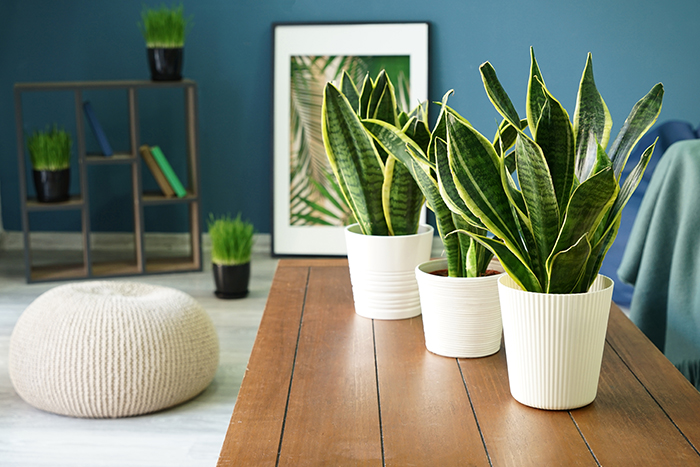How to care for snake plants
Snake plant care is simple and suits even a beginner indoor gardener. These hardy plants (also known as mother-in-law’s tongue, sansevieria, or dracaena trifasciata) trace their origins to the African desert and are well known for their hassle-free maintenance and air purifying qualities.

These and other reasons make them a perfect choice for indoor gardens, especially offices or buildings with fluorescent lights, where it can be difficult to find favourable air and light conditions.
Despite their reputation as near-indestructible, there are a few vital things that your sturdy, leafy plant friend absolutely needs. Review these snake plant care instructions and your snake plant will be sure to flourish.
Drainage
The most common problem snake plants succumb to is root rot, which is caused by overwatering or otherwise water-logged soil. Make sure your plant is potted in a specified cactus potting mix or a custom mix that has sand or perlite for excellent drainage. This plant does not like its roots to remain damp.
Light watering
Snake plants are a desert plant, so it is important to allow the plant’s roots to fully dry out between waterings. Forgetful? No problem, a snake plant needs minimal water to grow.
During the warm season, aim to water approximately every two weeks (keeping in mind that shade or humidity may necessitate a change in frequency). In the winter, it is recommended to water every three weeks to one month.
No matter what the season, always test the soil with your index finger to determine how dry it is. If it isn’t dry, don’t water.
Optional fertiliser
The key to snake plant care indoors is a quality potting soil, but a little all-purpose fertiliser during the growing season (10-10-10, every other watering) will give your plant a boost. Do not fertilise in winter.
Light
Snake plants are very adaptable and will tolerate shade to moderate sun. Their preference is for medium to bright indirect light. It is not recommended to put them in full, direct sunlight as it can burn their leaves.
Repotting
When you know how to take care of a snake plant, it grows quickly! As time passes, you will most certainly start to notice it grow bigger and new, small snake plants (also known as pups) rise up from the soil. Repot your snake plant in slightly larger pots as it grows and remove the pups, with their accompanying roots, to new pots as well. This will give you multiple, healthy plants!
Are snake plants toxic to animals?
Don’t forget: according to the American Society for the Prevention of Cruelty to Animals, snake plant is toxic if ingested by animals because it contains natural saponins that protect it against predators. Symptoms of ingestion are nausea, vomiting, or diarrhoea. If you have pets consider looking for another easy to care for plant.
Taking care of indoor plants is a rewarding hobby that brings nature inside. Thankfully, snake plants are beautiful and simple to care for. Try adding one to your home decor and see what grows!
Are you passionate about real estate? Subscribe to the Centris.ca newsletter now.
See also:
How to take care of a peace lily
 The Largest Number of Homes for Sale
The Largest Number of Homes for Sale



